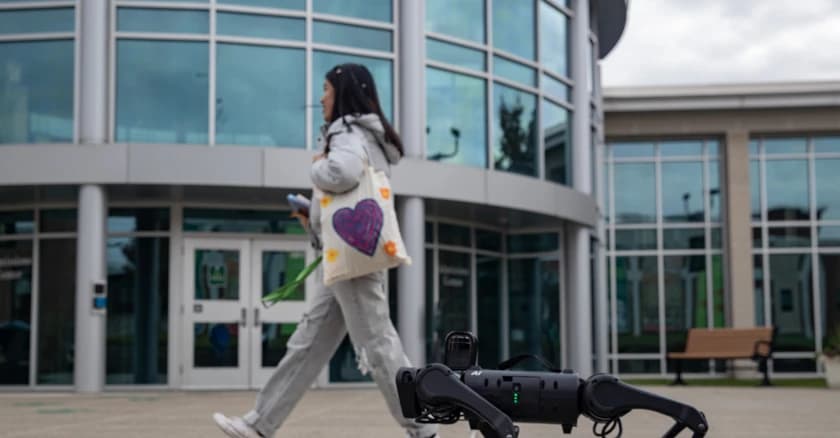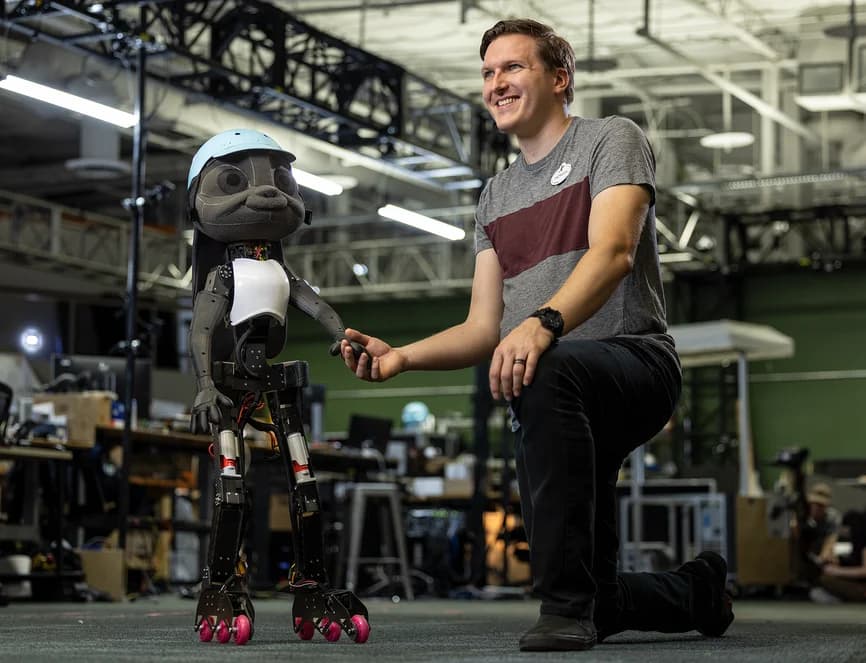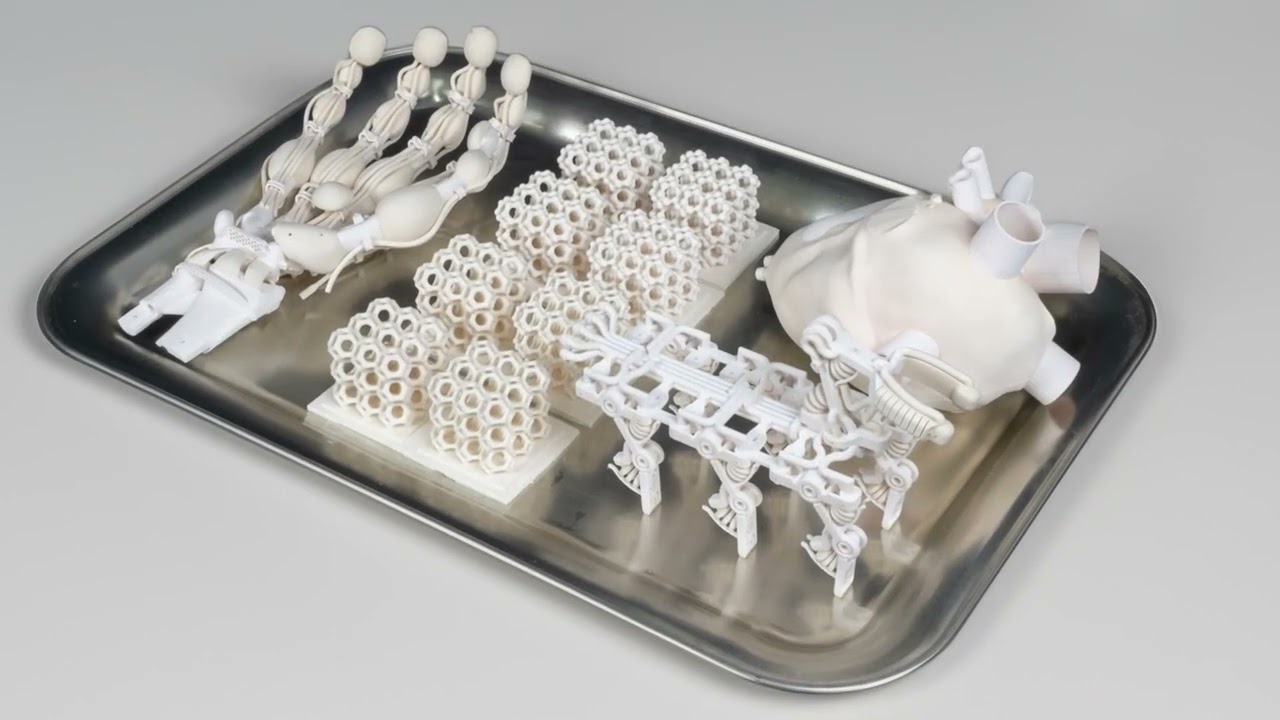
The Robotics Roundup is a weekly newspost going over some of the most exciting developments in robotics over the past week.

In today’s edition we have:
- Binghamton University Researchers Build Robotic Guide Dogs
- Robot Hand With Working Tendons Printed in One Go
- Humanoid robots are here, but they’re awkward. Do we really need them?
- Watch This Giant Chopstick Robot Handle Boxes With Ease
- Imagineer Morgan Pope Uses Electromagnetism to Spark Emotions
Binghamton University Researchers Build Robotic Guide Dogs

Researchers at Binghamton University are developing an AI-powered robot guide-dog called “Bearcat” that could improve the quality of life for visually impaired individuals. Unlike real guide dogs, this robot won’t require food or affection and will be equipped with natural language functions, enabling it to understand and speak the entire English language. The robot has been trained to recognize corridors, avoid obstacles, and generate maps of its surroundings. The team plans to make the robot completely autonomous and is seeking grants for further research and development. The advantages of seeing-eye robots over guide dogs include cost-effectiveness, longer lifespan, and the ability to communicate and read maps. The researchers envision these robots being widely accessible and shared among visually impaired individuals, similar to public rental bikes in urban areas.
Robot Hand With Working Tendons Printed in One Go
Researchers at ETH Zurich and Inkbit, a spin-out from MIT, have developed a 3D inkjet printing technique that can print complex moving devices made of multiple materials in a single print job. The printer sprays out resins that harden when exposed to ultraviolet light, allowing for the printing of both rigid and elastic materials simultaneously. The team successfully printed a bio-inspired robotic hand, a six-legged robot with a grabber, and a pump modeled on the human heart. The new technique eliminates the need for contact with the materials after deposition, enabling the use of chemistries that take longer to polymerize and opening up possibilities for using more useful materials. Future work will focus on expanding the range of materials that can be used with the printer.
Humanoid robots are here, but they’re awkward. Do we really need them?

Startups and companies are striving to build human-like robots that can effectively operate in human spaces. While some focus on humanoid designs, others prioritize human-centric functionality. For example, Agility Robotics’ Digit is a warehouse robot with bird-like legs that can pick up and move tote bins, while Figure AI aims to create commercial humanoids that can perform multiple tasks to compensate for labor shortages. Tesla is also working on a humanoid robot called Optimus, but prototypes are still in development. Despite skepticism, the pursuit of humanoid robots offers valuable insights into design, operation, and critical underlying technologies for mobility, dexterity, perception, and intelligence. These robots have the potential to transform industries and improve efficiency in various sectors.
Watch This Giant Chopstick Robot Handle Boxes With Ease
Dextrous Robotics has developed a robot that can efficiently move and handle heavy boxes using giant chopsticks. The robot’s manipulators allow for precise and robust grasping of a wide variety of objects. In a demonstration, the robot was able to handle around 150 boxes per hour, and in an uncluttered environment, it achieved speeds of up to 900 boxes per hour. The system is fully autonomous and capable of manipulating objects in an unconstrained environment. Dextrous Robotics has solved many technical challenges and is now focused on scaling up production to meet demand.
Imagineer Morgan Pope Uses Electromagnetism to Spark Emotions

Morgan Pope, a research scientist at Disney Research, designs robots for Disney’s theme parks with a focus on creating emotional experiences. Pope takes advantage of recent breakthroughs in robotics to create robots that can perform dynamic and engaging actions, such as jumping and tumbling. His projects include building a robotic stunt double for Spider-Man and designing a rollerblading cartoon character. Pope’s work as an Imagineer requires a combination of technological knowledge and a sense of “magic.” He emphasizes the importance of understanding multiple disciplines and encourages students to build things that bring them joy.

